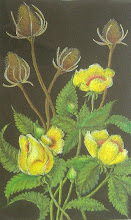
The south Indian state of Kerala boasts a rare cultural tradition that permeates the entire lifestyle of the Malayali. Artistic traditions handed down through generations are a constant reminder of those days of cultural renaissance and somewhere in the long past the technique of painting the Kerala murals was perfected. Murals occupy a special place in Indian, particularly Kerala, society. Those early artists of Kerala have contributed immensely to the development of the mural tradition. Religious iconography apart, murals are also cultural expressions of a people. It reflects the aesthetic, artistic and creative aspirations of a society. Kerala murals are said to have their roots in "Kalamezhuthu" a ritualistic Dravidian art form. The earliest murals in Kerala date back to the 9th century.The oldest murals in Kerala were discovered in the rock-cut cave temple of Thirunandikkara, which is now in the Kanyakumari District of Tamil Nadu. However the mural tradition seems to have flourished around the 15th century. Murals adorn the walls of numerous palaces, temples and churches of Kerala. The murals at Padmanabhapuram Palace, the Gajendramoksham mural at Krishnapuram palace, the Mattancheri murals and so on are in a league of their own.
The theme of the painting also has a unique bearing on the range of colours used. According to ancient texts there are three broad qualities assigned to superhuman, human and sub human beings, viz Satwa (the noblest), Rajas (the active and middle principle) and Tamas (the dark and destructive principle) respectively.To represent Satwik quality green and shades of green were used. Characters of a Rajasik quality were portrayed in red or golden and the Tamasik nature of the gods were represented not by black but in white, white demons and demonesses were represented by black.
I have always been fascinated by this rich artistic legacy of Kerala which has defied time and is today almost synonymous with the religious iconography of Kerala's temples. Here I've made a juvenile attempt at making murals.....not in the traditional way though ....using water colours.

















